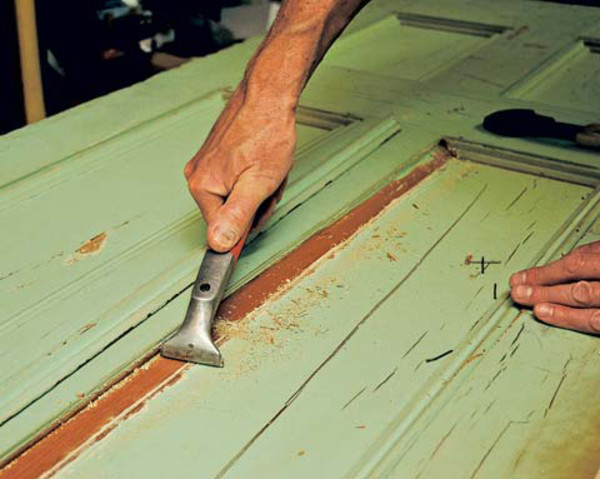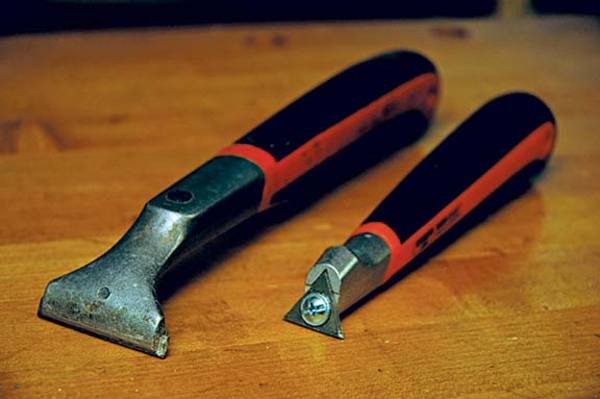If you live in an old house, the chances are good that you’ll eventually have to scrape built-up paint or debris off of something. The secret to any successful scraping job, both in removing an old finish and also avoiding damaging historic surfaces, is to use a sharp tool with the right-shaped scraper. Once reserved for professionals, carbide-blade scrapers have now become readily available at most tool retailers. The myriad of blade choices makes this remarkably sharp, durable, and versatile tool a toolbox must.

Where to Use It
Many older surfaces, from painted wood to stone, are abrasive and will quickly dull basic steel scrapers—which, in turn, will dull your enthusiasm for your project, and possibly lead you to damage the surface by scraping too quickly. Tungsten carbide, on the other hand, is at least three times harder than steel, and well worth the investment if you’re planning on removing paint from woodwork, scraping glue, scouring efflorescence from stone or brick, or getting rid of calcimine on plaster. Carbide scrapers work well in partnership with any paint-stripping method to remove both the residue and stubborn leftover finish.
Carbide scrapers also are great for molding restoration because the variety of scraper sizes and shapes allows you to work carefully with your molding profile and not remove detail. If you’re working to free molding, for instance, a paint bead often holds it to the adjoining woodwork. A triangular-shaped carbide scraper can be tucked right into that joint to remove the paint bead.
What to Look For
Carbide scrapers come in a large variety of sizes, both the blades and the tool itself. Better-quality models have two key components: First, the blade should attach to the handle with a strong bolt and washers. You want to be able to really lean on the tool for tough scraping, and you don’t want to have to keep tightening the blade. If the blade moves, even slightly, the scraper will be significantly less effective and potentially cause marring to fine surfaces. Comfortable, ergonomically correct handles also are essential to protect your grip from unnecessary strain. Longer handles offer better leverage for scraping, but could be bulky in smaller areas.

Many blade styles are sharp on each side, so you can simply reverse or rotate the blade when it becomes dull. Although blades can be sharpened, replacements are fairly inexpensive. If sharpening, remember that as with a good knife, the angle must be kept the same across the sharp edge. Thicker blades are easier to sharpen, and also will reduce any risk of flex and increase the influence of the sharp edge against the surface to move your project along faster.
The Bottom Line
Keep your carbide scrapers clean and dry, as you would any quality tool. High-quality scrapers are pretty rugged, but should a handle become cracked or loose, don’t use the tool, as the pressure required for scraping could lead to a nasty injury if the handle detaches.
OHJ contributing editor Noelle Lord Castleis a writer, consultant, and teacher who shares her passion for old buildings through Old House C.P.R., Inc.







